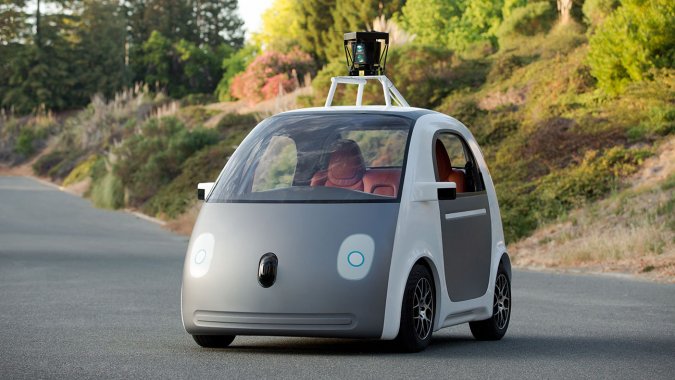-
Tips for becoming a good boxer - November 6, 2020
-
7 expert tips for making your hens night a memorable one - November 6, 2020
-
5 reasons to host your Christmas party on a cruise boat - November 6, 2020
-
What to do when you’re charged with a crime - November 6, 2020
-
Should you get one or multiple dogs? Here’s all you need to know - November 3, 2020
-
A Guide: How to Build Your Very Own Magic Mirror - February 14, 2019
-
Our Top Inspirational Baseball Stars - November 24, 2018
-
Five Tech Tools That Will Help You Turn Your Blog into a Business - November 24, 2018
-
How to Indulge on Vacation without Expanding Your Waist - November 9, 2018
-
5 Strategies for Businesses to Appeal to Today’s Increasingly Mobile-Crazed Customers - November 9, 2018
Google Disappointed With Proposed DMV Rules For Driverless Cars
Under the new rules, manufacturers like Google must certify their autonomous vehicles to comply with specific safety and performance requirements and have their cars tested by a third-party organization in order to receive a permit to operate on the road.
Advertisement
A licensed driver with an autonomous vehicle operator certificate, issued by the California DMV, must be present in the vehicle at all times, “and must be capable of taking over immediate control in the event of an autonomous technology failure or other emergency”.
Under the new rules, initial permits for self-driving cars would be for three years, and the manufacturers would need to prove that their autonomous cars are safe.
The proposed regulations were announced following months of study by California’s DMV after the state’s legislature stated that it required the DMV to develop regulations for testing and the deployment of autonomous vehicles.
Meanwhile, Uber – whose car-riding app has seen rapid global adoption while also raising the ire of many traditional taxi drivers – is also hard at work to enable autonomous cars, which it sees as the next disruptive innovation in transportation.
Company spokesman Johnny Luu says Google, which has led development of the technology, is “gravely disappointed” by the rules, which will limit Google’s ability to deploy the cars as quickly as it would like. It wants to have at least one licensed driver onboard any auto that rolls along public roads, so that someone can take control if things go awry. The company’s current prototypes, which are plying in California and Texas, were originally designed without steering wheels and brake pedals, but the company simply had to include them in the final design to comply with existing guidelines.
Google revealed earlier this year that it was ramping up testing on its driverless vehicle program, having initially begun working in the area in 2009.
It’s also caused some disappointment at Google, which has been testing driverless cars for a couple of years in the state of California.
California’s DMV has made a draft of regulations including a controversial ground rule for self-driving vehicles.
California is scheduling two public workshops to discuss the draft regulations, one on January 28, 2016 in Sacramento, and the other in Los Angeles on February 2, 2016.
Whilst not set in stone, the rules would upset Google’s plans in California for driverless cars if passed.
“The primary focus of the deployment regulations is the safety of autonomous vehicles and the safety of the public who will share the road with these vehicles”, DMV Director Jean Shiomoto said in a statement.
The draft DMV regulations come at a time when the self-driving vehicles market is getting even more serious. Company officials have long said they expect the technology to be consumer ready within five or six years.
Advertisement
Brian Soublet, the DMV attorney who helped draft the rules, said the agency would tackle regulations for cars with no driver inside in the future.




























